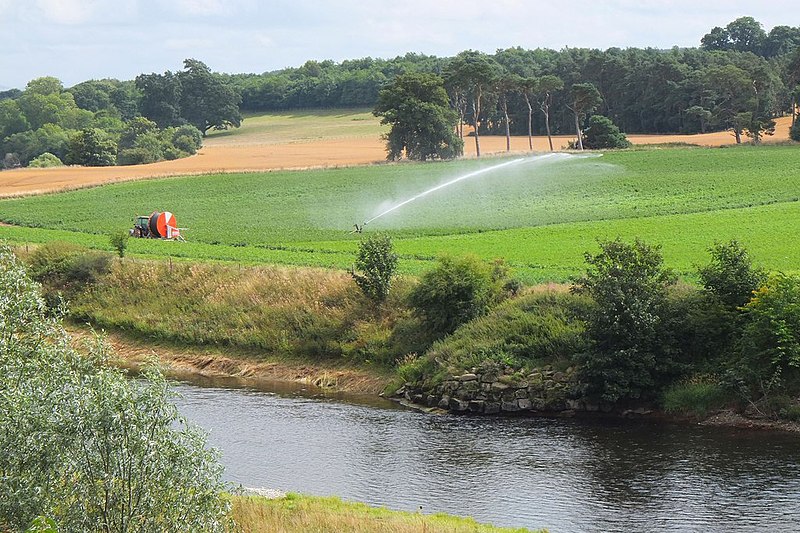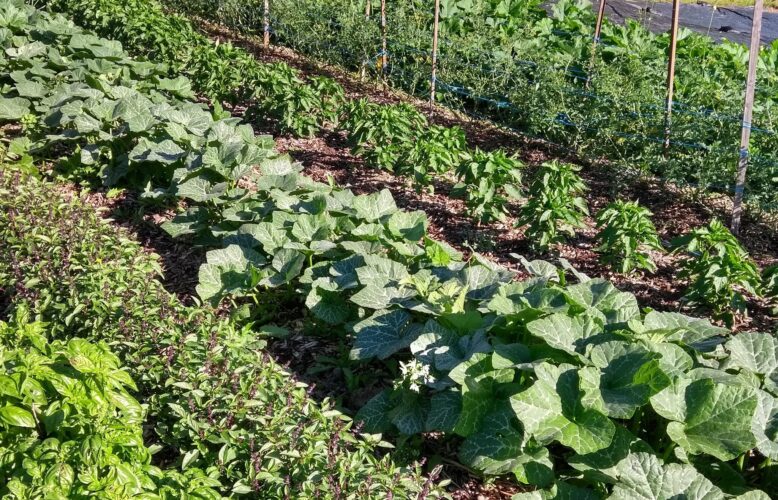If you live on a smallholding you will learn a bunch of skills, and acquire a bunch of knowledge, that your townie counterparts would never need. Here are some of the smallholder skills that you may, in time, develop as a handy maplotter.
Building and fixing things
On a smallholding there is always something that needs fixing. It could be as simple as a fence or gate, or it could be more technical or mechanical.
Fortunately, the internet is a fine resource of how-to-do-it video clips from which to learn before tackling the job at hand. But just remember that many of them are by Americans. This means that units of measurement will tend to be imperial rather than metric.
And as the years roll by on your plot you are bound to need to build some basic structures. These could include pump-houses, stables, cement dams, storages or paving.
Thus some basic smallholder skills such as blockmaking, bricklaying, concrete, carpentry and roofing will come in handy.
And, one of the more pleasant smallholder skills to acquire is the art of thatching. In South Africa we are fortunate firstly to have plentiful supplies of thatching grass each year, and plenty of highly skilled commercial thatchers. Nevertheless, a true do-it-yourselfer will want to learn this ancient craft himself.
Leatherwork
If you keep horses it will inevitably happen that the stitching on a saddle, stirrup leather, girth or bridle comes out. Or, a rein or cheekpiece will be broken. The ability to sew these small items together doesn’t require any specialist knowledge really – only some specialist tools. These include an awl for making holes in the leather, heavy leatherworking twine and big needles. A thimble is also good if you are to avoid sore fingers.
Another useful tool is a leather punch for making holes in, eg, stirrup leathers, and a sharp craft knife.
The same set of tools will enable you to repair shoes, belts, handbags and other leather and pleather items around the home.
Water and waste management
This skillset covers what you will learn about the provision of fresh, clean water, at the right pressure, in your home, stables and gardens. You will learn about boreholes and borehole pumps, and the paraphernalia that goes with them. You will acquire knowledge about water tanks, tank stands and booster pumps. And you will learn about irrigation, including more booster pumps, irrigation systems, misters, sprayers and drippers, filters and fertigation.

But what about waste water? You will also learn about sewage management, including septic systems, soakaways, conservation tanks and grey water usage.
In your lands you might also apply water conservation techniques such as contoured swales to contain as much runoff as you can. Such are the smallholder skills.
Fencing & fence repairs
Your plot will inevitably have fences, and fences periodically need repairing. Also, different activities and animals require different fences to keep them safe and confined. You will need to know the differences if you are to avoid the heartbreak of disappearing animals.
And some basic fencing tools, and knowledge of how to use them, are helpful. These include a wire tensioner (different designs are available), a binding wire tightener, a post thumper, and a good pair of fencing pliers.
If you choose electric fencing a voltage tester (spark tester) is also necessary.
Mechanics
It will inevitably happen that one morning you will find your car’s battery is dead, or a tyre is flat. Or you will need to carry out some basic maintenance on another piece of farm machinery, for example an old tractor.
Basic mechanical knowledge is, therefore, useful, particularly the ability to work out what is wrong and why, for much time can be wasted pulling something to pieces in the vain pursuit of “the problem”.

In fact, if you can afford it, a spare vehicle, parked in a shed and kept in working order for emergencies, will prove a lifesaver for you.
Keeping livestock
The range of what animals you can keep on a smallholding is vast. It includes horses, cattle, sheep, goats, pigs (if you can house them lawfully), poultry of all types, snails, and fish. Each species requires different feeding, management and housing. Each offers different prospects for making a profit (or losing money) from them.
First aid
If the sight of blood makes you faint this may be a bit too much for you, but life on a plot will invariably cause some loss of blood – either by members of your family and staff, or by your animals. Bones, too, may be broken.
Some basic knowledge of wound care, splinting, and very basic diagnosis of ailments, both animal and human, will be useful, as will a basic first aid kit. Just make sure that any drugs kept as part of the kit are within their expiry dates, and that the kit includes basic disinfectants, cotton wool swabs, bandages and dressings.
You might also include a sewing needle or two for the removal of splinters, and tweezers for the removal of foreign objects from wounds. Not to mention a syringe or two, both for injecting medicines if necessary, but also for injecting disinfectant solution when cleaning wounds.
As recently mentioned, it is no longer advisable to have your own snake bite kit, the modern thinking being to take any victim of a snake bite straight to the nearest hospital.
Beekeeping
Among the many types of animal and insect you can choose to keep are bees. Not only will you be doing the environment a favour (because bees pollenate edible crops, flowers and fruit) but you will be doing your family and friends a favour if you harvest the bounty that an active beehive provides. Namely honey, beeswax and propolis.
In South Africa, where our bees are much more aggressive that their northern hemisphere cousins, successful beekeeping will require you to acquire protective clothing and certain simple tools. Not to mention acquiring the basic knowledge and skills of the craft from an experienced beekeeper in your area. Fortunately beekeepers’ associations exist throughout the country, all offering advice and even formalised training to newbies.
Welding and metalwork
While you no longer need the skills and tools of a blacksmith’s shop, some basic metalworking tools and skills will prove invaluable.
Such tools will include an angle-grinder with metal-cutting wheel, tin snips and a riveting tool. Also useful, particularly when making structures out of steel, is a welding set and rods. Be warned, however, that you are unlikely to become a competent welder on your first few tries, as welding is a skill that requires hours of practice in the same way that golfing or playing the piano require practice.
There is an attachment for a standard electric drill that incorporates two cutting wheels. This makes snipping sheetmetal very much easier and more accurate than manual tin snips.
Food preparation and preserving
If you keep livestock for meat, a useful skill to acquire is the ability to butcher a carcass neatly and with little waste.
This is often best taught by working alongside someone who has already learned the skill. And, of course, it is also best done with suitable tools, which include a meat saw and butcher’s knives.
Fortunately, in South Africa there are plenty of small abattoirs in rural areas that will do the task for you if you are unwilling or ill-equipped.
Aligned with butchering of the basic carcass is the further processing of the various cuts, into sausages, smoked joints, biltong etc.

But food preservation is not only about meat. Many fruits and vegetables can be deliciously preserved for consumption when they are out of season, or for condiments, or snacks etc.
These methods include bottllng, dehydrating or drying, freezing, pickling, smoking, fermenting or salting, each being suitable for different raw material and purposes.
Growing and foraging
The ability to grow and harvest one’s own food is one of the most fundamental skills that, frankly, anybody should acquire. It should be made a compulsory subject in the school curriculum.
Fortunately on a smallholding one has plenty of space to grow stuff for the kitchen, and there are now plenty of resources available to guide one through the process.
But it’s not only in the formal garden that one should source food. For there is often much growing in the wild that is both edible and often highly nutritious.
Often, what is classed as a weed by one is a cherished food of another. A simple example of this is purslane, a low-growing spreading plant that thrives in summer. It has fleshy leaves that can be added to stews and salads or served dressed on their own, and which can also be worked into a salsa.
Another example is the waterblommetjie found in the Cape, not to mention wild nuts, berries and certain wild roots.
And, of course, mushrooms. But before you go out to pick the mushrooms in your field, or from your lawn, do your research meticulously. For although all mushrooms are edible, some are only edible once – they can kill.
Milking & dairy products
Many smallholders keep a cow, or cows, in milk for their own use. Thus they are able to enjoy fresh, full cream milk as part of their diet, and have the ability ot make their own dairy products such as thick cream, butter, yoghurt and cheese.
Book
If you can find a copy, a vital addition to any smallholder’s library should be John Seymour’s New Complete Book of Self Sufficiency. It is published by Dorling & Kindersley in the UK. Although written in 1976 from a UK perspective many of the smallholder skills described will come in handy on a South African plot.
Main image: Extensive vegetable garden, Wikimedia Commons
Click here for more articles on the smallholder lifestyle.

